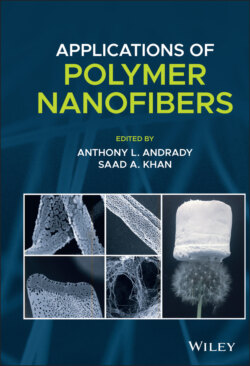Читать книгу Applications of Polymer Nanofibers - Группа авторов - Страница 47
2.5.1 Protective Clothing
ОглавлениеProtective clothing is used to protect human bodies from dangerous environments, such as in high‐risk industries (e.g. hazardous chemicals, flame) as well as outdoor adventures such as in severe weather. Breathable and barrier functional clothing is one of the most attractive aspects of protective clothing (Thenmozhi et al. 2017). Synthetic fibers with high mechanical performance, combustion‐resistant organic fibers, high‐performance inorganic fibers, and so on, are all involved for this end‐use (Zhou et al. 2005). Using nanofiber fabrics as the effective interlayer is a promising design to offer enhanced barrier performance because of the size effect compared with common nonwoven fabrics. Besides, in order to satisfy the purpose of comfort, water vapor diffusion, and air permeability are commonly considered in the application of protective clothing.
Bagherzadeh et al. prepared sandwiched structure textiles by composing subtract of woven fabrics and PAN nanofiber nonwoven inner layers via electrospinning that were used for water‐repellent breathable protective clothing (Bagherzadeh et al. 2011). In this work, according to the comparison of samples with and without nanofiber nonwoven fabric, the nanofiber‐containing fabrics provided much lower air permeability and higher water vapor permeability, which were even better than those of commercial Gortex. The product possessed strong windproof properties and good water vapor permeability behavior, which was attributed to the smaller pore sizes of electrospun nanofibers in the multilayer woven fabric (Bagherzadeh et al. 2011). Additionally, Vitchuli et al. fabricated protective clothing with Nylon 6 nanofibers deposited onto woven 50/50 nylon/cotton fabric, preventing aerosol chemical, and biological threats. As a comparison, the filtration efficiency of original fabric was only 38%, indicating only a few particles were blocked by the fabric. After depositing Nylon 6 nanofibers, the performance improved significantly. The filtration efficiency raised dramatically, up to 99.5% with the increase of nanofiber areal density (Vitchuli et al. 2010). Researchers also tried to incorporate activated carbon, carbon nanotubes, and submicron enzyme particles into electrospun nanofiber fabrics to avoid hazardous materials. Gibson et al. electrospun elastomeric nanofiber fabrics for military chemical/biological protective clothing systems (Gibson et al. 2001). Nylon 6,6 was electrospun and deposited onto an activated‐carbon‐loaded PU foam. The resultant product had good water vapor diffusion and air permeability and aerosol particle penetration.
